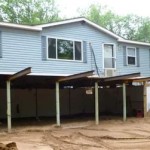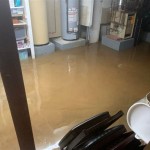How Do I Insulate A Basement Ceiling
The basement is often the most neglected area of the house when it comes to insulation. However, insulating your basement ceiling can provide a number of benefits, including reducing energy costs, improving comfort, and preventing moisture problems. If you are considering insulating your basement ceiling, there are a few things you need to know.
Types of Insulation
There are a variety of different types of insulation that can be used for basement ceilings. The most common type is fiberglass batts, which are made from glass fibers that are bound together with a resin. Fiberglass batts are relatively inexpensive and easy to install, but they are not as effective as some other types of insulation.
Another option is spray foam insulation, which is applied as a liquid that expands to fill the space between the joists. Spray foam insulation is very effective at preventing air and moisture infiltration, but it is more expensive than fiberglass batts and can be difficult to install.
Finally, you can also use rigid foam insulation, which is made from polystyrene or polyurethane. Rigid foam insulation is very effective at preventing heat loss, but it is also more expensive than fiberglass batts and spray foam insulation.
How to Install Insulation
Once you have chosen the type of insulation you want to use, you need to install it correctly. The following steps will help you install insulation in your basement ceiling:
- Remove any existing insulation. If there is already insulation in your basement ceiling, you will need to remove it before you can install new insulation.
- Install a vapor barrier. A vapor barrier will help to prevent moisture from entering your basement ceiling. You can install a vapor barrier by stapling it to the underside of the joists.
- Install the insulation. Once you have installed the vapor barrier, you can install the insulation. If you are using fiberglass batts, you will need to cut them to fit between the joists. If you are using spray foam insulation, you will need to apply it evenly to the underside of the joists.
- Cover the insulation. Once you have installed the insulation, you should cover it with a layer of drywall or plywood. This will help to protect the insulation from damage.
Benefits of Insulating Your Basement Ceiling
There are a number of benefits to insulating your basement ceiling, including:
- Reduced energy costs. Insulation will help to keep the heat in your home during the winter and the cool air in during the summer. This can lead to significant savings on your energy bills.
- Improved comfort. Insulation will help to make your basement more comfortable by reducing drafts and noise. This can make your basement a more enjoyable place to live and work.
- Prevented moisture problems. Insulation will help to prevent moisture from entering your basement. This can help to prevent mold and mildew growth, which can cause health problems and damage your belongings.
If you are looking for a way to improve the comfort and energy efficiency of your home, insulating your basement ceiling is a great option. By following the steps outlined above, you can easily install insulation in your basement ceiling and enjoy the benefits it provides.

Should I Insulate My Basement Ceiling And Walls Aire Serv

Ceiling Insulation In Your Basement

Best Insulation For Soundproofing Your Ceiling Renoviso

What Is Basement Ceiling Insulation And It Worth

What Are The Pros And Cons Of Basement Ceiling Insulation Upgradedhome Com

Basement Insulation Jm Of New Bedford

Basement Insulation Upstate Spray Foam

Basement Insulation Problems 4 Things That Can Cause You Troubles

Basement Ceiling Insulation Interior Inspections Internachi Forum

Insulate A Basement Ceiling With Building Moxie As The Diy Guy







